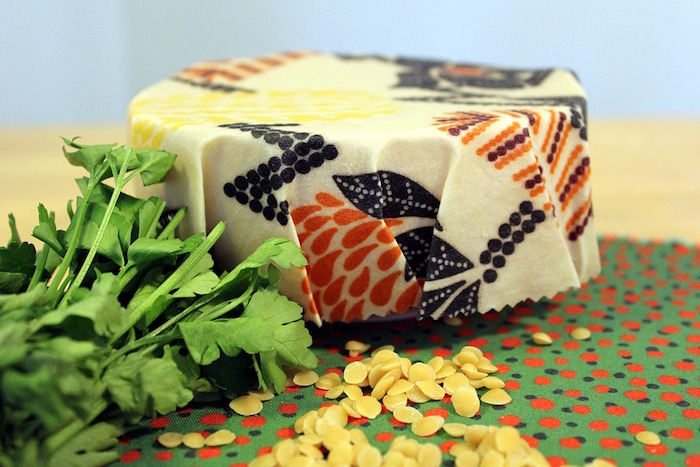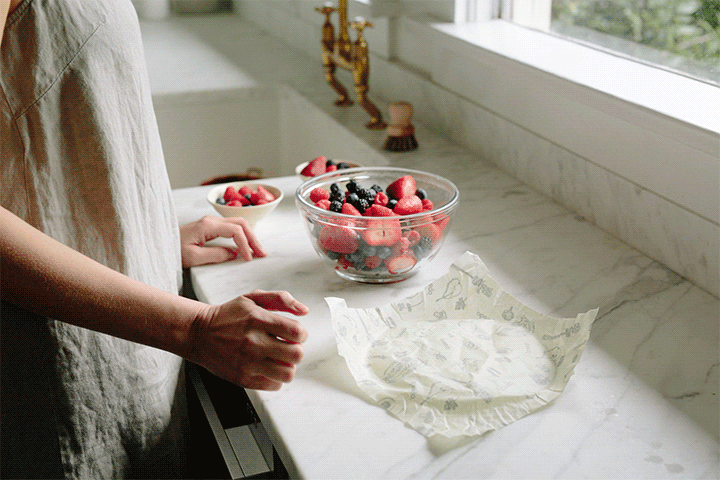Plastic wrap was a pretty neat invention for 1943. Produced by the Dow Chemical corporation, this simple kitchen aid made life easier for many generations as they packed away leftovers from a tasty meal. But is cling wrap bad for you? The internet produces mixed results, so I will tell you what we do know and you can decide for yourself.
I believe that beeswax wrap is the 2018 version of a food storage miracle, and it’s good for the environment and even better for your health.

Why Plastic Wrap is Bad for You (and the Environment)
I think it’s pretty obvious that plastic wrap and bags are bad for the environment. I’m lucky enough to live by the ocean, and I can tell you that plastic is taking over our beautiful seas. In addition, plastic wrap is not recyclable.
Many may not know however, that plastic wrap is made from chemicals that are not good for your health. When food is hot, or plastic is heated and cooled, plastics naturally leach chemicals. This is particularly true for the two types of plastic commonly used for cling wrap: polyvinyl chloride (PVC) and diethylhydroxylamine (DEHA).
As I’ve described before here, not all chemicals are bad, but many that are used to make flexible plastic are. There are chemicals added to the PVC plastic wrap to make it pliable, and those very chemicals have been linked to hormone disruption in the body.
To make matters worse, PVC has a telling nickname “the poison plastic“. It earned this name for the fact that it’s one of the most toxic plastics in every stage of its life: production requires petroleum, it leaches harmful chemicals during use, and emits cancer causing dioxin when it’s in the landfill.
DEHA appears to now be the most common type of material used for plastic wrap. Consumers Union tested the migration of DEHA in 1998 to find that it does leach high levels of the plasticizer into food, especially those that are hot or high in fat (like meat and dairy). DEHA has been linked to liver toxicity.
I don’t know about you, but this is enough for me to look to safer options.
What to Buy
Abeego
Abeego (affiliate link) gets the credit for being the first company to mainstream using beeswax for food storage. I use their products at home and love how they are affordable and last forever (you simply wipe down or wash lightly after use).
Bee’s Wrap
Handmade in Vermont with organic cotton, Bee’s Wrap features specialty products like sandwich and bread wraps. They also feature your standard wraps that can be used for every day use.
How Does It Work?
Cotton is treated with beeswax to make a firm but pliable wrap to roll up half used lemons, onions, bread and cheese. Or you can press it around the corners to cover bowls and dishes as you would plastic cling wrap. Then you wash and dry your beewswax wrap and use again! (Photo credit for the below image goes to Abeego)

How to Wash your Beeswax Wrap
Simply wipe down the wrap and dry before you store. If you need to, you can wash the wrap under the faucet.
How Long Do they Last?
If you take good care of your beeswax wrap it will last for a full year!
Never miss a post and join my mailing list.




Hi Lindsay! Going to send this one to family/friends, sums it up much better than how I’ve been talking about it :-)
Thank you for the informative blog you share with us.